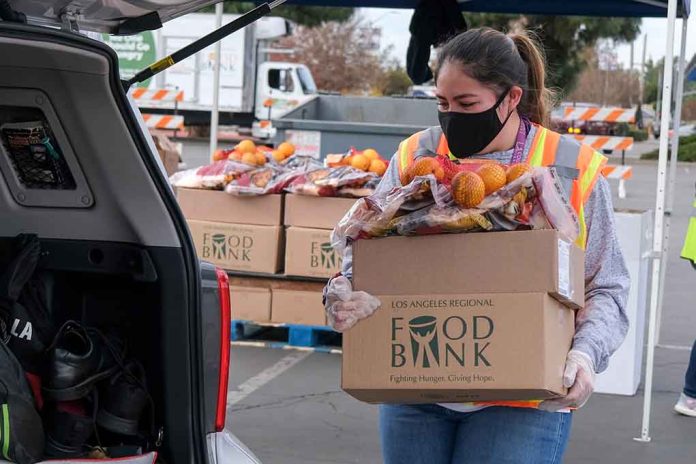
(AscendHealthy.com) – When it comes to feeding people in need, food pantries and food banks both have very important roles in our society. One works to store food that goes to needy families, while the other is used for distribution. Let’s take a look at the differences between a food pantry and a food bank, and how individuals can access food using food pantries — and even pet food pantries — near them.
Food Banks: Places of Storage
Nonprofit organizations operate food banks. Food banks are storage facilities. The food stored there gets organized and awaits distribution. Volunteers typically run these organizations.
A food bank storage facility could look like a church basement to a supersized warehouse building devoted to storing food. Where does the food in food banks come from? Grocery stores, food drives, individual citizens, and restaurants typically provide food to food banks.
The food bank’s reigning organization typically works to inventory all donations, and works hard to solicit enough food for everyone. This means they have to receive food, catalog it, and do a health check to make sure the food is not expired and won’t make someone sick. They also maintain relationships with partner food pantries to make sure all points of community contact have what they need.
Food Pantries: Centers of Distribution
A food pantry is the place you can go directly if you need food. Food pantries are responsible for distributing the food and ensuring it gets into the hands (and mouths) of community members in need.
There are many types of pantries, including school food pantry programs to ensure students and their families have food, mobile food pantries which come to the communities in need, and more.
Food pantries often accept monetary donations as well. They usually use this money to purchase the staples like canned vegetables, rice, and peanut butter. With donations, food pantries can fill the gaps and do their best to ensure nutritional food to meet people’s needs.
Food pantries also distribute food boxes from the federal government’s commodity supplemental food program.
Pet Food Pantries
Thinking of a hungry child in need is hard enough, and thinking about pets who don’t have enough food is also difficult. Pet food pantries exist to support the needs of pets who don’t have enough food.
For people who live alone, as well as many seniors and unhoused people, pets represent the only emotional support or family they have. It’s devastating to think about how many pets end up in shelters because the owners love them very much — but are simply not able to afford to feed them.
A little known fact: Meals on Wheels doesn’t only provide food for elderly homebound individuals, but also for the furry family members in their households. Local human societies are also a good resource to find pet food pantries nearby. Free Financial Help provides this list for those looking to help their pets stay fed.
How to Find a Local Food Pantry
If you want to find food to ensure you and your family stay fed, a local food pantry is the way to go. You can ask local churches and other nonprofits about finding programs nearby, and you can also consult this free Care and Share search tool to find food pantries in your area.
You’ll find two types of food pantries listed:
- Mobile food pantries, which come to you. They’re like grocery stores on wheels. They park in opportune locations to serve families in food deserts or in low-income areas. You can walk up to them and ask for a food box.
- Traditional food pantries, which aren’t unlike shopping in a grocery store. You can go in and select what you need. Some also offer drive through and walk up services. This is the best bet if you have a consistent need.
Lastly, consider applying for the Supplemental Nutrition Assistance Program (SNAP), formerly known as food stamps, to ensure you get enough to eat. Your community is here to help.
Copyright 2023, AscendHealthy.com




















